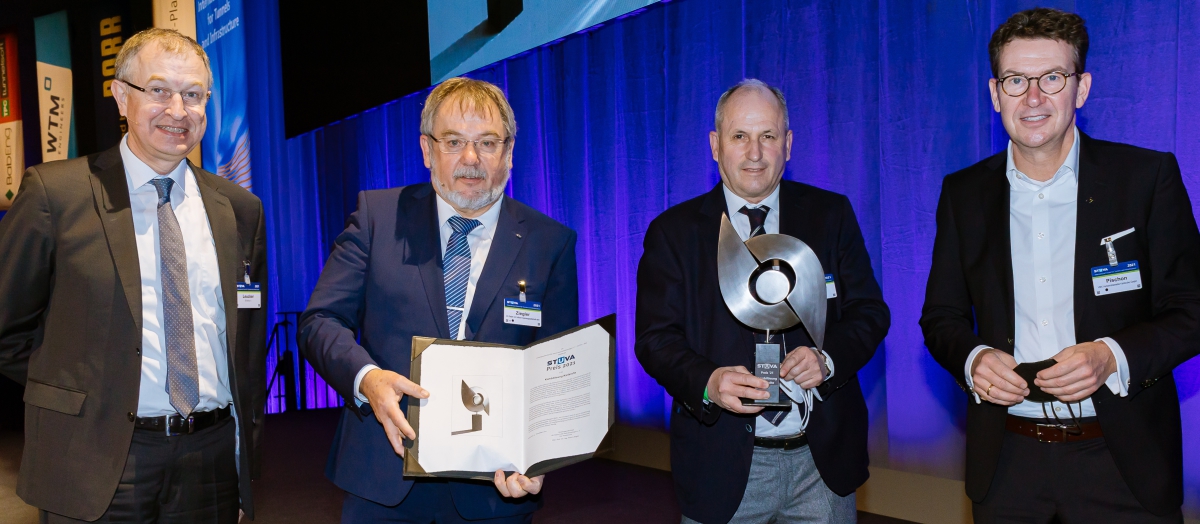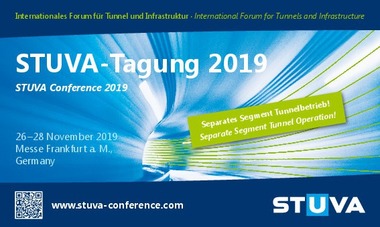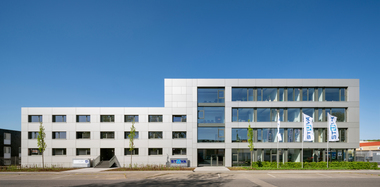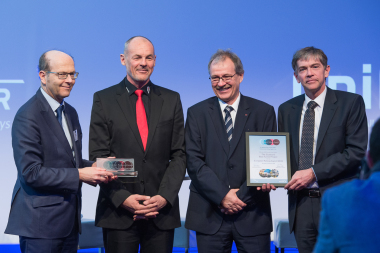The “Karlsruhe Combined Solution“ Wins the STUVA Prize 2021
The STUVA Prize 2021 was awarded to the “Karlsruhe Combined Solution” (Kombilösung Karlsruhe) and the associated overall public transport concept of the city. Dr. Alexander Pischon, Chairman of the Management Board of Verkehrsbetriebe Karlsruhe GmbH (VBK), and Frank Nenninger, Technical Managing Director of Karlsruher Schieneninfrastruktur-Gesellschaft mbH (KASIG), accepted the award from STUVA Board Chairman Prof. Dr.-Ing. Martin Ziegler and STUVA Managing Director Prof. Dr.-Ing. Roland Leucker (photo, from the right).
The prize was awarded on the one hand to the new construction project „Karlsruhe Combined Solution“ with its light-rail and road tunnel, and on the other hand to the „Karlsruhe Model“ as a whole. Direct connections to the surrounding areas without changing trains are made possible by the transition from inner-city lightrail systems to regional railway lines (dual-system technology).
The „Karlsruhe Model“ originated back in the 1980s. The idea behind it was that journeys from the city of Karlsruhe to the surrounding area should be possible without changing trains. This would make public transport in the region more attractive again. However, the implementation of this project required the joint use by trams of the rail network of the federal Railways, now Deutsche Bahn AG, in the surrounding area. This required the design of a carriage that could be used on both the inner-city power grid and on the federal railway tracks in the surrounding countryside. The final implementation of the „Karlsruhe Model“ took place on 25 September 1992 with the commissioning and continuous operation of the light-rail line from Karlsruhe to Bretten.
Today, cities such as Baden-Baden, Pforzheim, Rastatt, Freudenstadt and Bad Wildbad in the Black Forest, as well as the railway lines to the Rhineland Palatinate via Wörth to Germersheim, are directly connected to the city centre of Karlsruhe. And the Ortenau region can now also be reached by the Karlsruhe light-rail system. Since 2004, the extended S4 line has been in operation from Karlsruhe to Achern. Passenger numbers have increased by 70% since the introduction of the „Karlsruhe Model“, from 100 million then to 170 million nowadays. Since the mid-1990s, the light-rail network has been steadily expanded through the further use of railway lines in the region around Karlsruhe.
This resulted in the existing network reaching its capacity limits in both the inner-city area, and in particular in the East-West Kaiserstrasse main traffic axis. In order to increase the efficiency of rail-bound public transport once more, and at the same time to make it sustainable, the city of Karlsruhe decided on the „Combined Solution“ after a previous positive referendum.
The light-rail and tram tunnel, sub-project 1, runs under the two most important axes of Karlsruhe‘s city centre. The construction of the railway tunnel was carried out mechanically with a tunnel boring machine and partly also by mining with compressed air, and in cut-and-cover construction. Over a length of about 2.4 km in a west-east direction, the tunnel connects the four new underground stops Europaplatz, Lammstrasse (when this goes into operation it will be called Marktplatz (Kaiserstrasse)), Kronenplatz, Durlacher Tor and in a north-south tunnel around one kilometre long the three future underground stops Marktplatz (in future Marktplatz (Pyramid)), Ettlinger Tor and Kongresszentrum. The seven new stops were built using the top-down method and are positioned as close to the surface as possible.
In the Kriegsstrasse, a new cut-and-cover car tunnel is also being built under a new tram line as sub-project 2. It is 1.6 km long, begins west of the Karlstor and ends in the east in the area of the Kriegsstrasse/Ostendstrasse node. With the road tunnel, part of the car traffic will move underground. This will make room above ground for the new tram line with three new overground stops.
Karlsruhe is an impressive example of how a tramway can reach the limits of its capacity through successful public-transport expansion and operation. As a result of the very successful increases in demand, tram after tram finally drove through the pedestrian zone. This led to a constant separation effect and a reduction in the quality of stay. The subsequent „Combined Solution“ construction project returned Karlsruhe‘s city centre to its population.




